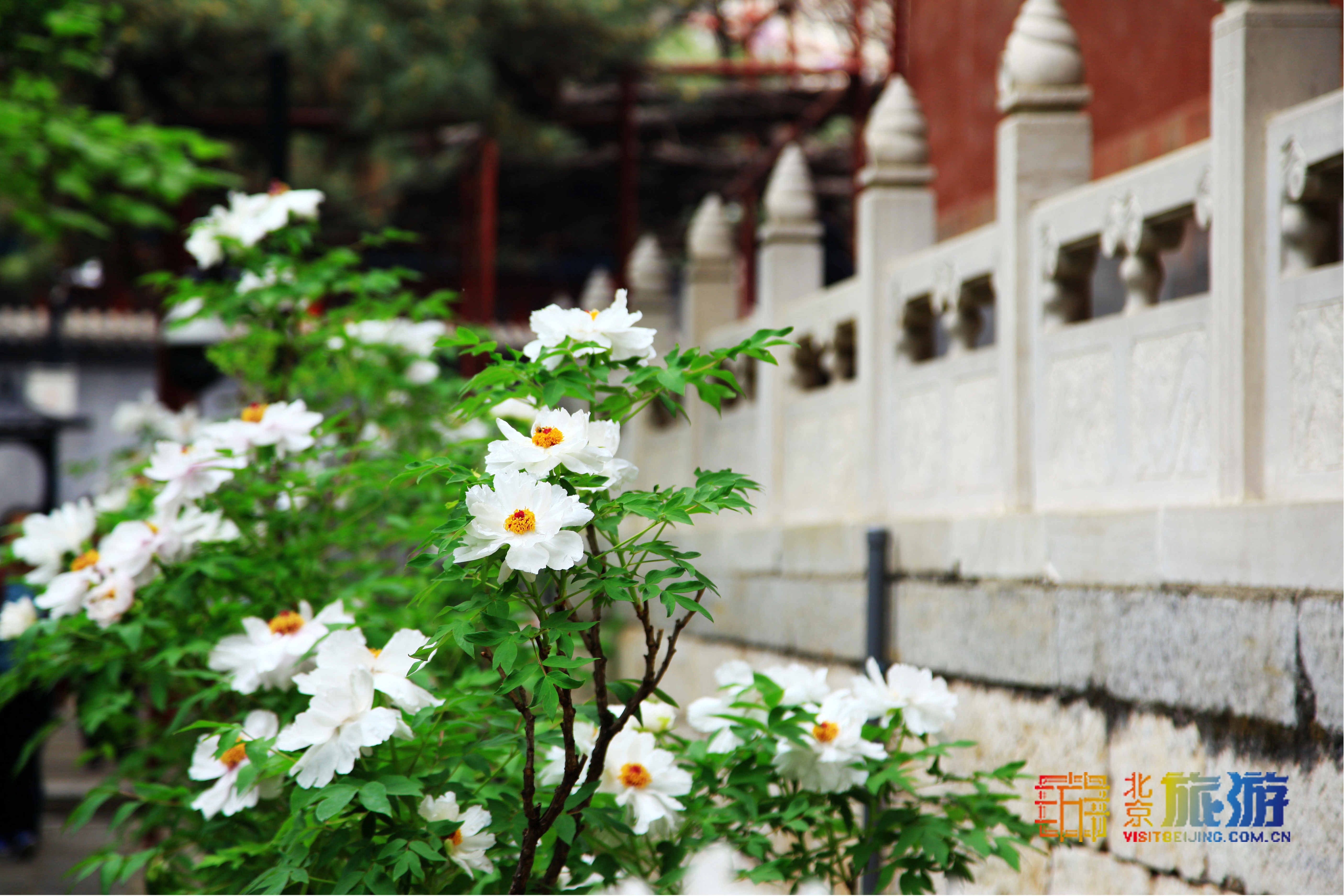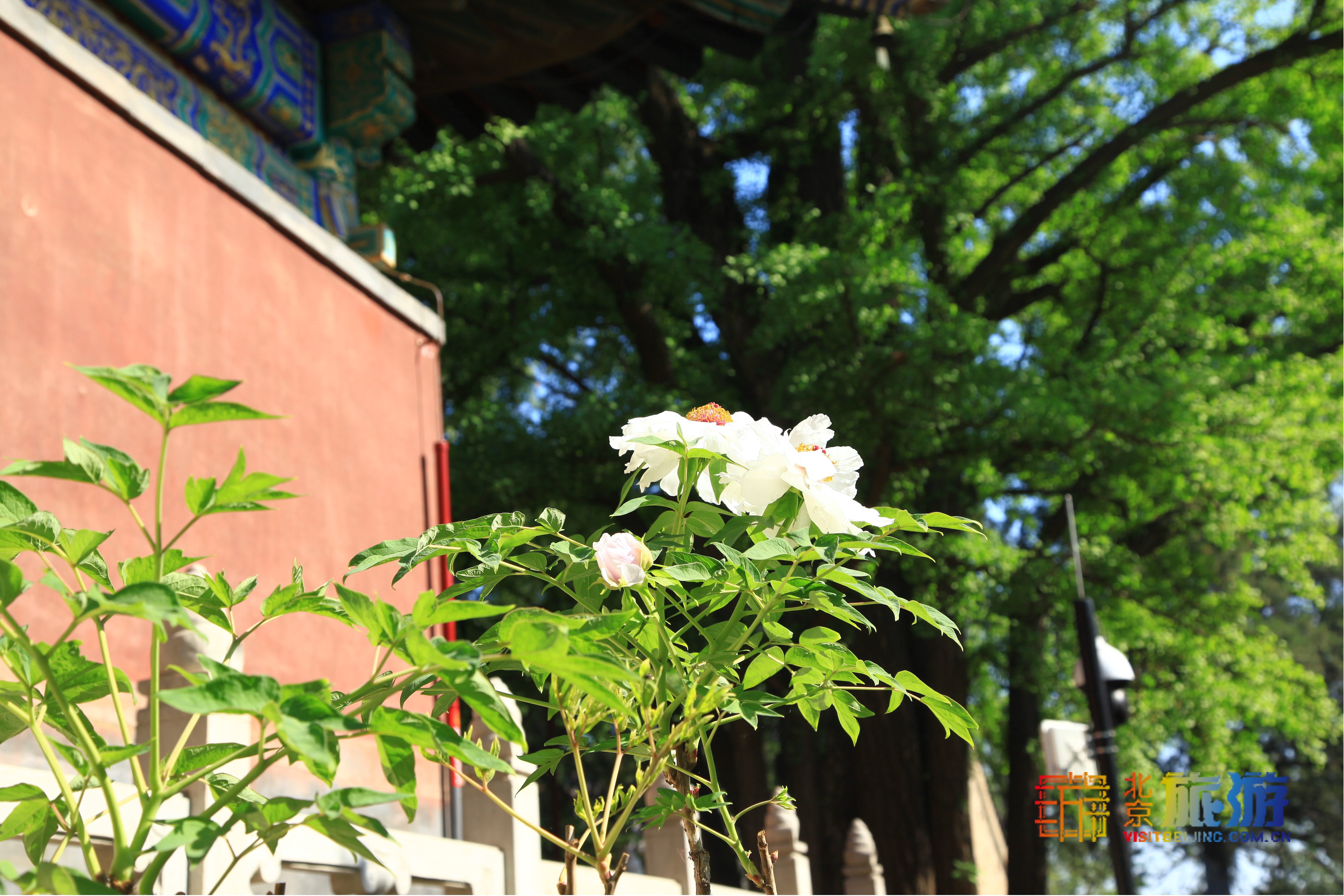
Beijing Hongluosi (Hongluo Temple) is situated at the southern foot of the Hongluo Mountain in the north of Huairou district, which was originally called Daming Si. It was renamed of Huguozifu Si during the Zheng Tong reign (1436-1449) in the Ming Dynasty. However, it has been commonly known as Hongluosi. The temple was initially founded by an eminent monk, Fo Tucheng, in the Christian era 338 of Xian Kang reign in Dongjin Dynasty (317-1644).
Hongluosi covers an area of 800 hectares; the scenic spot is a good choice for one-day tour. The whole scenic area is composed of three cultural areas (the Hongluosi, the Guan Yin Temple and the huge stone Buddha) and two natural attractions (the Hongluo Mountain and the Qinglong Mountain). This is a wonderful destination blooming flowers in spring, spend a cool holiday in summer, enjoy the splendid leaves in autumn, and visit bamboos and plums in winter. Hongluosi is embraced by the Hongluo Mountain in the north and Hongluo Lake in the south. Rolling hills stand in various shapes, dense forests and towering ancient trees are thriving, and grey tiles and red walls of the buildings are all faintly visible in the ocean of bamboos and pines. Three scenic spots dot around the temple, namely the “imperial bamboo forest”, gingkoes in pair” and “pines entangled with wisteria”. With an area of about 66.6 hectares, on the east of the temple the ancient pinewoods there is interspersed with the statues of maitreya, and the twelve symbolic animals. The painted pavilions and corridors, the Guanyin Temple, hidden in the valley, will present you with a wonderland.

Imperial Bamboo Forest
The bamboo grove in front of the gate of Hongluosi which was cultivated by the Buddhist monk Yun Shan of Yuan Dynasty has a history of 600 years. According to Huairou County Annals, in the 32nd year during the reign of Kang Xi in Qing Dynasty (the year 1694), the emperor came to Hongluosi to burn joss sticks. Seeing the emerald green bamboo groves, he found it enchanting. He ordered the officials nearby to count the bamboos. It was 613 in total. Before his departure, the emperor urged the monks and local officials to protect the bamboo grove so that he could often come and enjoy the sight. Later people called the grove “the Imperial Bamboo Grove”. In the northwest of the bamboo grove lies the rehabilitated Bamboo Viewing Pavilion where Emperor Kang Xi once set up an imperial seat and enjoyed the bamboo. Now the bamboo grove is flourishing with over one million bamboos. The evergreen bamboo grove is the most luxuriant one in Beijing, with the largest area and the longest history. So it is called one of the three wonders of Hongluosi.
The bamboo grove in Hongluosi, located in northern China, stays green all the year round and forms a beautiful scenic spot of Hongluosi where you can appreciate fresh bamboo shoots in the spring, cool emerald bamboo grove in the summer, dancing bamboos in the wind during the autumn and a shade of green in snow during the winter.
The Male and the Female Ginkgoes
There are two ancient ginkgoes in front of the Grand Buddha Hall, the female one in the east and the male one in the west. The female one is more delicate and shorter while the male one is taller and stouter. The male one is more than 1100 years old and over 30 meters high, the trunk being 7 meters in circumference. Despite its great age, it is flourishing with vitality. Every year in spring, the male ginkgo blooms with little faint yellow flowers but bears no fruits in autumn; the female tree does not bloom in spring but is overburdened with fruits in autumn. Thus, people consider them a perfect match. Therefore, they are called couple tree. An old Chinese saying goes that “A single tree cannot make a forest”. However, the male ginkgo is gradually producing a forest as a couple of branches grow straightly upwards from its root. Now, there are ten branches and one trunk. The ginkgo trees shoot tender leaves in the spring, produce green shades in the summer, and decorates the Grand Buddha Hall with golden leaves in the autumn. As a relic plant, ginkgo is a living plant fossil which can only be found in China and one of the oldest tree species in the world, endowed with high value of research and appreciation. The male and female ginkgoes are also considered one of the three wonders of Hongluosi.
As ginkgo grows slowly, there is a saying goes that “If one plants a ginkgo, the fruit would be reaped by his grandson.” Therefore it is called “grandfather and grandson” tree. As the shape of its leaves resembles the foot of the duck, it is also named duck foot tree.
Wisteria binding the Pine
In the west of the compound between Grand Bodhisattva Hall and Three Sages Hall is one of the three wonders of Hongluosi, Wisteria binding the Pine. It is actually a pine tree and two Chinese wisterias. The pine tree is 6 meters high with nine branches spreading in all directions. The two Chinese wisterias as thick as bowl mouth creep up the top of branches like a dragon winding around a jade pole, which increases the charm of the pine tree. The luxuriant pine tree and wisterias form a natural huge umbrella which shelters from heat or light for about 400 square meters. In early May every year, the branches are wigged down with the flowers of Chinese wisterias like clusters of purple agate, which is like a purple propitious cloud floating among hall buildings. The strong scent of flowers penetrates the whole temple. In ancient times, during flower season, the abbot of Hongluosi invited the abbots or elders of a Buddhist monastery of the temples nearby to enjoy flowers and talk about Buddhism under the tree. According to the record in the events inscribed on a tablet of Daming temple, Hongluo Mountain, when the breeze is blowing at night, you will hear the sound which is like the clang of gold and silver. As the common saying goes, if wisteria winds a pine tree, it is difficult for a pine tree to survive, while the two Chinese wisterias and a pine tree in Hongluosi grow harmoniously for over 800 hundred years. The wisteria can’t live without the pine tree, while the pine tree can’t live without the wisteria. Thus, it is called one of the three wonders of Hongluosi.



